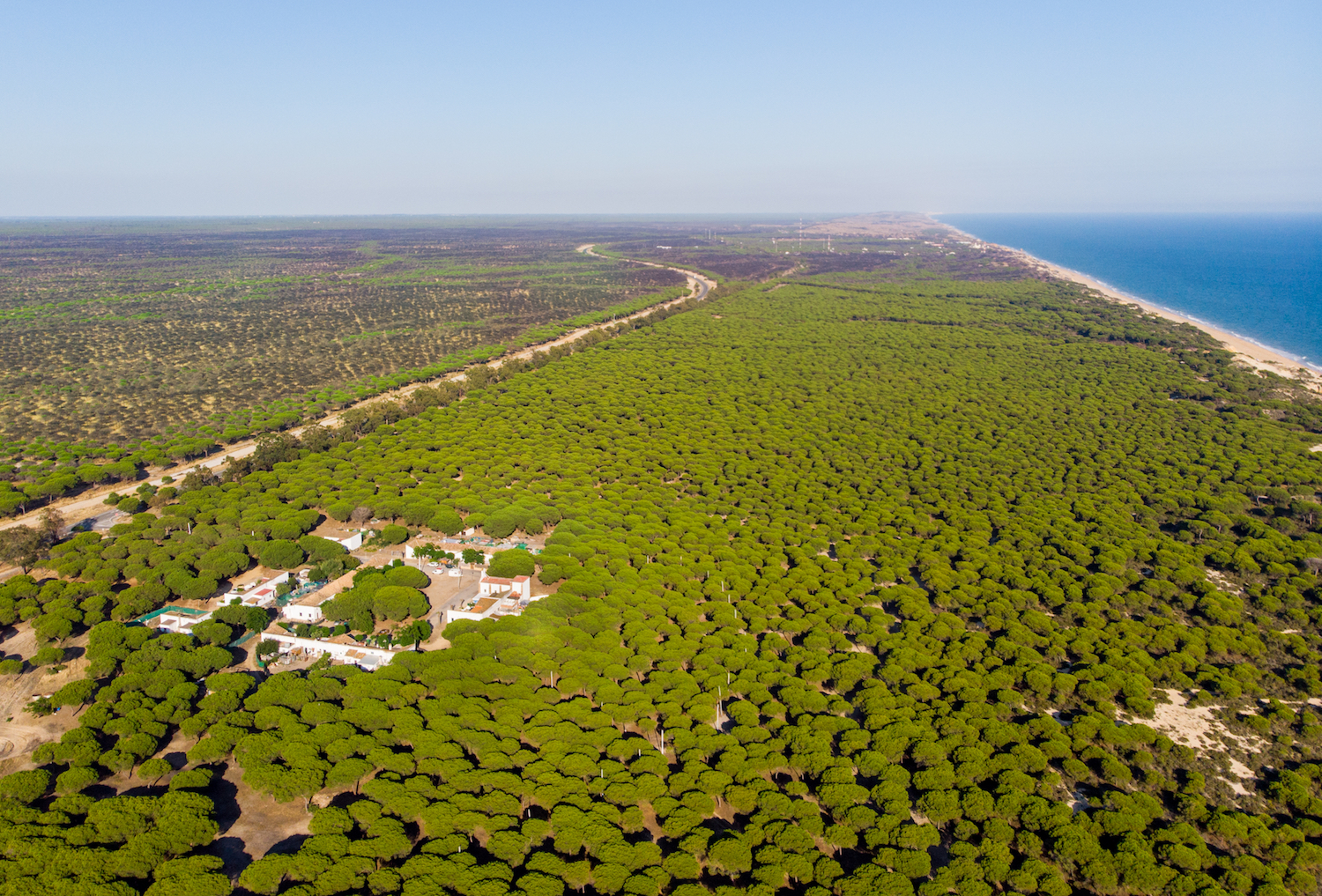Atlantis Found (Again)! And Exasperated Scientists (Again) Raise Their Eyebrows

Nearly 2,400 years ago, the philosopher Plato described Atlantis as a mighty state that possessed 10,000 chariots, advanced technologies, vast numbers of elephants and bulls, and a series of complex canals. And now, in a new documentary, a U.K.-based group claims to have discovered the ruins of this once-flourishing society on what is now the Atlantic coast of Spain.
But one archaeologist said that the ruins likely belong to another ancient culture, and several researchers interviewed by Live Science could barely contain their exasperation when they heard the news of yet another Atlantis discovery. (People have made dozens of such claims over the years, locating the legendary society in Antarctica, Bolivia, Turkey, Germany, Malta, the Caribbean and elsewhere.)
"Bless their hearts — if they're correct about this, that would be awesome," said Ken Feder, a professor of anthropology at Central Connecticut State University. "But here's my problem: As an archaeologist, I know that I always need to be in the company of my bullshit detector. And these guys, they have done just about everything they possibly can to set off my bullshit detector." [Images: Lost Medieval City Discovered Near Angkor Wat]
Seen from space
It's debatable whether Atlantis even existed. Plato described the ancient society in about 360 B.C., writing that, in effect, a politician named Critias heard about the society through a game of historic telephone dating back to ancient Egypt. Atlantis served as the perfect example of a society that had become corrupted by its material wealth, advanced technology and military might. Then, the gods destroyed Atlantis about 9,000 years ago in a cataclysmic event, Plato wrote.
For centuries, scholars viewed Plato's writings on Atlantis as allegory. But that perspective changed in 1882, when Minnesota's U.S. Rep. Ignatius Donnelly (1831-1901), an amateur scientist, published the book "Atlantis: The Antediluvian World" (Harper & Brothers), which claimed that Atlantis was a real place.
Since then, people have searched for the sunken remains of the city. In the most recent example, employees at Merlin Burrows pinpointed, two years ago, what may be Atlantis in Spain, Bruce Blackburn, the CEO of Merlin Burrows, told Live Science. The company, based in North Yorkshire, England, uses historical records and satellite data to find archaeological sites.
Blackburn's team used data taken from commercial satellites, such as Landsat 5 and Landsat 8 (which also supply data for Google Earth), to find the site, which is located in Spain's Doñana National Park. "Obviously, it's a very bold thing to say," said Blackburn, who has a background in business and finance. "Everybody is going to have [one of] two opinions. One is that 'This is great. Let's have a look at it,' and one will be 'That's a load of rubbish.'" [The 25 Strangest Sites on Google Earth]
Sign up for the Live Science daily newsletter now
Get the world’s most fascinating discoveries delivered straight to your inbox.

What they found
The company's researchers chose to look for the site in Spain after reading Plato's two dialogues on Atlantis, Blackburn said. They also looked at another text, but Blackburn won't say which one. "We won't share that in a public forum at this stage," Blackburn said, adding, however, that he expects that the writing will be submitted for scrutiny "in the fullness of time."
Text in these documents included Plato's descriptions that "in front of the mouth which you Greeks call, as you say, 'the pillars of Heracles,' there lay an island which was larger than Libya and Asia together." Such descriptions led Merlin Burrows to the Spanish coast, near the Strait of Gibraltar, Blackburn said. There, the team found several archaeological clues: large circles that were possibly the bases of ancient towers, the ruins of what the team claimed may be the Temple of Poseidon and a greenish-blue patina coating some of the ruins — all details that Plato included in his dialogues, Blackburn said. [10 Biggest Historical Mysteries That Will Probably Never Be Solved]
The team also found the remains of a long sea wall, as well as signs of a tsunami, which could be evidence of the cataclysmic event that drowned the society, Blackburn said.
"The Atlantis cities, which are very detailed in Plato's writing, are really there for everyone to see," Blackburn said.
Next, Merlin Burrows took samples of material — which is likely human-made concrete, Blackburn said — from the circle-shaped foundations and the possible temple ruins. The company gave these samples to a materials-analysis laboratory in Italy, which dated them to between 10,000 and 12,000 years ago, Blackburn said. However, by press time, Blackburn hadn't said which methods the laboratory used to date the concrete.
Merlin Burrows and Ingenio Films have made a 2-hour documentary called "Atlantica" about the finding, and Blackburn said he expects the companies to make more documentaries.
"What we really want to do is we want to franchise the find," Blackburn said. "We want to make an awful lot of money out of it. And with that money, we want to support the archaeological community."
Ancient remains
Merlin Burrows isn't the first group to claim that Atlantis is located in southern Spain. In "Atlantis Rising," National Geographic announced that the network had found evidence that Atlantis was located in Doñana National Park, as did a 2004 study in the journal Antiquity. And Elena Maria Whishaw, director of the Anglo-Spanish-American School of Archaeology, published the 1929 book "Atlantis in Andalucia," (Rider & Company) which hypothesized that the region was a colony of Atlantis.
It's no wonder southern Spain is a spot of interest, as people did live there long ago. In a new study in the December issue of the Journal of Archaeological Science: Reports, researchers found that humans lived in what is now Doñana National Park about 5,000 years ago, according to an analysis of pollens and microscopic remains in the area's sediment.
That study revealed that the park was above sea level during certain periods, including the Neolithic and the Copper ages. Researchers also found that Doñana National Park sits upon Holocene sediments that started to accumulate about 7,000 years ago. "Below these sediments are pre-Holocene sedimentary deposits and layers of fossilized sands that date from thousands of years earlier," said Juan José Villarías-Robles, study co-researcher and vice director of the Institute of Language Literature and Anthropology at the Center for Human and Social Sciences in Madrid.
If the dating of the 10,000- to 12,000-year-old concrete specimens reported by Merlin Burrows is accurate, then those samples could be from the pre-Holocene formations, Villarías-Robles said. But, at least for this location, that date doesn't match up with an Atlantis-type society, he said. "However, assuming the material is man-made (which is a big assumption), the date takes us, from a culture-history perspective, down to Palaeolithic and post-Palaeolithic times," Villarías-Robles told Live Science in an email. "These are the times of hunters and gatherers, rather than those of the creators and rulers of an extensive agricultural, cattle-breeding, maritime polity [like Atlantis]." [In Images: An Ancient European Hunter Gatherer]
Pick and choose
Meanwhile, Feder (the anthropologist at Central Connecticut State University) questioned why Merlin Burrows hadn't submitted its findings to a peer-reviewed journal, which would give other scientists the chance to vet the research. "It immediately turns on my bullshit detector when somebody, instead of doing that, makes the announcement through a press release, a press conference, a web page or a documentary," Feder said.
In his book "Encyclopedia of Dubious Archaeology: From Atlantis to the Walam Olum" (Greenwood, 2010), Feder found 53 specific descriptions of Atlantis in Plato's dialogues, including that the city had bridges connecting rings of land, as well as a central island surrounded by a stone wall on every side. Descriptions also said that Poseidon's temple in Atlantis had a roof of ivory, walls of silver and pinnacles of gold. It's common for amateur scientists to check off a few of these boxes but rare for anyone to go through the entire checklist, Feder said. [How Plausible Are These 20 Imaginary Worlds?]
The area is "a very interesting spot," but that fact "quite obviously" isn't news, said Mark Adams, author of "Meet Me in Atlantis: My Quest to Find the 2,000-Year-Old Sunken City" (Dutton, 2015). Archaeologists have known for years that southern Spain was a maritime-trading hotspot in antiquity, Adams told Live Science.
"Does that make it [this area] Atlantis? I can't say for sure, 'no,' but I'm not seeing any new evidence that sways me" toward yes, Adams said, after watching the new "Atlantica" trailer. Like Feder, Adams said that a few aspects of the site meet the Atlantis checklist, including that the region experienced cataclysmic earthquakes and floods, but that other aspects are missing.
Adams said he would take an Atlantis proposal more seriously if it had key details from Plato's dialogues, including the city's unique layout of concentric circles (like a bull's eye) of sea and dry land. (These concentric circles are different than the polka dot-like circles that Merlin Burrows found on the landscape.) Or, perhaps, archaeologists will find an inscription about Atlantis in an Egyptian temple, where, according to Plato's writing, the original description was found, Adams said.
"What a lot of people do is they'll take the parts of Plato's story — and there's tons of information in there, which is why this is so fun to play with — it really is like a treasure map — and they take the parts that match with their hypothesis and they quietly leave out the parts that don't match with their hypothesis," Adams said. [Rumor or Reality: The Creatures of Cryptozoology]
In reality, it's likely that Plato twisted together elements of different stories and myths he had heard, sculpting that source material into the likely fictional story of the society of Atlantis, the advanced, yet-corrupt society that the gods destroyed. "[Plato] was not writing this down as a land surveyor's report that people could follow 2,400 years later," Adams said. "He was using this to make a philosophical argument."
Put another way, "People very often claim to have found Atlantis," a classical archaeologist in England, who declined to be named, told Live Science. "But if they'd read the text, they would realize that it was a legend, not a place."
- Massive Pyramid, Lost City and Ancient Human Sacrifices
- Lost City of Irisagrig Comes to Life in Ancient Stolen Tablets
- Photos: The Legendary City of Xanadu
Editor's Note: This article has been updated to indicate that Plato's dialogues describing Atlantis were written sometime around 360 B.C., not 330 B.C. as was previously stated.
Originally published on Live Science.

Laura is the archaeology and Life's Little Mysteries editor at Live Science. She also reports on general science, including paleontology. Her work has appeared in The New York Times, Scholastic, Popular Science and Spectrum, a site on autism research. She has won multiple awards from the Society of Professional Journalists and the Washington Newspaper Publishers Association for her reporting at a weekly newspaper near Seattle. Laura holds a bachelor's degree in English literature and psychology from Washington University in St. Louis and a master's degree in science writing from NYU.









